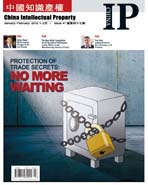From December 13th to 18th, 2011, the “Intellectual Property Forum on Chinese Painting and Calligraphy & Chinese Contemporary Painting and Calligraphy Exhibition” was held at the World Art Museum of the China Millennium Monument by China Daily IP Weekly, IPR Channel of China Daily’s website and China Intellectual Property magazine. The theme of the forum was to “eliminate the false and retain the truth; inherit and pass on civilization; develop on the basis of innovation,” summarizing comprehensively the IP related problems that the field of painting and calligraphy is currently facing. In the keynote speeches, officials from the Copyright Administration Department of National Copyright Administration, Judges from IP Tribunals and experts and scholars in the IP field made speeches on China’s policies and regulations concerning the protection of works of painting and calligraphy, forms of artwork infringement, defined infringement, the legal application in typical cases and proposed effective routes for the continuous and healthy development of Chinese painting and calligraphy. The representatives of the artists mainly introduced how to discriminate genuine and fake artworks and offered their own unique perspectives into the present and challenging situation artists face in today’s artwork markets in China. Speakers also shared their experiences in the protection of rights for their own personal artworks with the audience. At the same time, they expressed how perplexing and difficult it was to protect their rights as well as their expectations for the future; offering suggestions for how laws and policies could be enacted, amended and enforced as remedial measures which would both simplify and strengthen their ability to exercise their IP rights.
Two roundtables were held in the forums: “Dialogue between Art and Industry” and “Dialogue between Art and Law.” The topics of discussion were “How to Purify the Artwork Market” and “How to Protect Intellectual Property” respectively. Several senior lawyers from the Copyright Professional Committee of Beijing Lawyers Association, experts in the IP field, representatives of artists and representatives of the culture industry offered in-depth discussions and analysis on IP related problems in the process of artistic creation, exhibition, transaction and the auction of artworks, the identification and liabilities of artwork infringement, and the application of “Droit de suite” in China. (Droit de suite is a French term which refers to an artistic right which is recognized in some countries and permits artists or their heirs to receive fees after a “first sale” of a piece of art. Other countries, such as the U.S., reject this right and deem that an artist’s compensation rights end after the first legitimate point of “first sale” where the artist knowingly waives the right to future profits from the use of the artwork.) The speakers also discussed the future development of the organizations for the protection of artists, revision of the current Copyright Law, the exploitation of the copyright value of artworks and other issues relevant to the preservation of artistic rights and the integrity of the artistic market in China.
The exhibition displayed the works of more than 40 artists who are the most representative contemporary famous painters and calligraphers in China, including Shen Peng, Ouyang Zhongshi, Liu Dawei, Feng Yuan, Wang Mingming, Yuan Xikun, Yang Yan, Aixinjueluo Daojian, Cui Zimo, Moonlit Master, Li Jiacun, Qin Long, Ji Peili, Yang Xiukun, Wang Zhiyuan, Yin Guoyou, to name just a few. Among the exhibited works, many were new works of the artists which were on display for the first time.
(Translated by Snow Li)
Experts' Opinions
Wang Zhuo: In China’s judicial practice, the standard of “access plus substantial similarity” has always been adhered to. According to the principle of “The burden of proof is on anyone who claims” in the Civil Procedure Law, the plaintiff has to prove not only that the defendant has actual access to the plaintiff’s work, but also that the works of the plaintiff and the defendant are substantially similar.
(Wang Zhuo, Judge with the IP Division of Beijing No.1 Intermediate People’s Court)
Qi Lei: The delay in the making of the measures for the protection of folklore works is essentially due to the complicated coverage of such works and the great differences in international society on the protection for such works.
(Qi Lei, Chief Judge, IP Division, the People’s Court of Dongcheng District, Beijing)
Suo Laijun: It is necessary to give full play to the role of copyright registration for the protection of works, including painting and calligraphy.
(Suo Laijun, Deputy Director of China Copyright Protection Center)
Zhang Jie: In the application of law, sometimes the adjudicative compensation cannot sufficiently protect the right holder, which has also results in the extremely low costs for those guilty of infringement acts. Dismal penalties not only harm the copyright protection for artworks, it also creates the impression that the system lacks positive and adequate protection for the rights of artists.
(Zhang Jie, Legal Advisor for Science and Technology Publication Committee of Copyright Society of China)
Zhao Jiaxiang: I think patent should proceed over copyright because it has a more specific legal basis than copyright in safeguarding rights and interest in lawsuits. However, patent protection is inferior to copyright in terms of its shorter protective period.
(Zhao Jiaxiang, Director of the Sub-Committee of Industrial Design of Academic Committee of All-China Patent Agents Association)
Zhai xin: There are many ways to achieve economic returns from the copyright of artworks. Depending solely on cracking down counterfeits is a rather primary measure, whereas licensed operation could make an relatively ideal approach.
(Zhai Xin, well-known artist)




